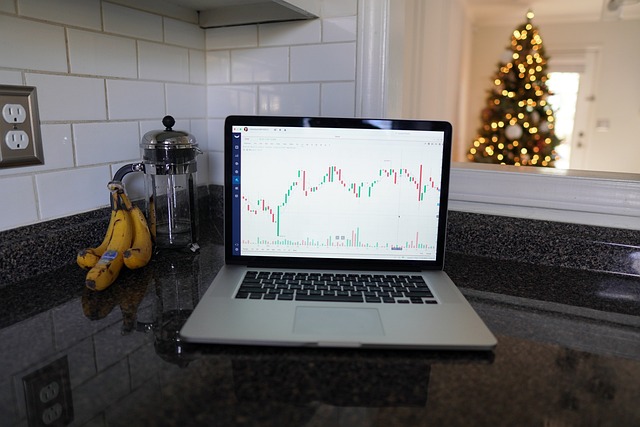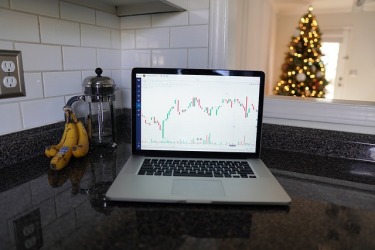To properly evaluate a trading strategy, you need to use various metrics. This blog explains metrics such as **Profit Factor** and **Payoff Ratio**. By effectively utilizing these metrics, you can objectively analyze the profitability and risk of your trading strategy. Traders, please read on.
1. Metrics Useful for Evaluating Trading Systems

It is helpful to use various metrics to evaluate a trading system. Below, we introduce metrics for objectively analyzing trading performance.
Trading Performance Aggregation Period
When evaluating trading performance, you first need to define the period for aggregating the data. This aggregation period refers to the duration over which trading results are collected.
Forward Period
The forward period refers to the time during which a trading strategy is actually implemented. Conversely, when using backtesting results, it is sometimes referred to as the validation period rather than the forward period. The longer the forward period, the more reliable the trading strategy’s performance is considered.
Total Net Profit
Total Net Profit indicates the total amount of profit or loss gained from trades executed based on the trading strategy.
Number of Trades
The number of trades is the count of trades made during the aggregation period. A higher number of trades increases the reliability of the evaluation of the trading strategy’s performance.
Win Rate (Winning Percentage)
The win rate indicates the percentage of winning trades in a trading strategy. The win rate is calculated by dividing the number of winning trades by the total number of trades. It is one of the important metrics for evaluating the performance of a trading strategy.
Expectancy
Expectancy is a value that indicates “how much profit can be expected from a single trade.” The higher the expectancy, the more likely the trading strategy is to generate profits.
Profit Factor
The Profit Factor is the value obtained by dividing the total profit of a trading strategy by its total loss. A Profit Factor of 1 or greater indicates that the trading strategy is generating profit.
Payoff Ratio
The Payoff Ratio is the value obtained by dividing the average profit of winning trades by the average loss of losing trades. A higher Payoff Ratio suggests that the trading strategy is more likely to generate profits that outweigh the risks.
It is important to use these metrics to objectively analyze and improve the performance of your trading strategy.
2. What is the Profit Factor?

Profit Factor is one of the metrics used to measure the efficiency of a trading or investment strategy.
Profit Factor Definition and Calculation Formula
The Profit Factor is calculated by dividing the total profit earned by the total loss incurred. Specifically, the following formula is used:
Profit Factor = Total Profit / Total Loss
Meaning and Interpretation of Profit Factor
The Profit Factor represents how much revenue is generated by the investment relative to the losses. Specifically, it indicates how many dollars of profit there are for every dollar of loss.
For example, if the realized profit is $1,845,108 and the realized loss is $1,334,526, the Profit Factor is approximately 1.38. This means there was approximately $1.38 of profit for every $1 of loss.
Evaluating the Profit Factor
The Profit Factor is used to evaluate investment strategies and automated trading systems. Generally, if the Profit Factor is greater than 1, the trading strategy is considered profitable.
To improve the Profit Factor, the following points should be considered:
– Increase the Win Rate: Increasing the percentage of wins also increases the proportion of profit.
– Improve the Risk/Reward Ratio: Optimizing the balance between risk and reward prevents losses from exceeding profits.
Decomposition of the Profit Factor
The Profit Factor can be decomposed into the Win Rate and the Risk/Reward Ratio. Specifically, the following equation holds true:
Profit Factor = Risk/Reward Ratio × Win Rate / ( 1 - Win Rate )
As this formula shows, to increase the Profit Factor, both the Win Rate and the Risk/Reward Ratio must be improved.
Important Notes
It is not appropriate to evaluate a trading strategy solely based on the Profit Factor. It should be considered in conjunction with the Win Rate and Risk/Reward Ratio.
Furthermore, it is crucial to properly set the percentage of capital exposed to risk per trade (Loss Tolerance Rate). Setting an appropriate loss tolerance rate can prevent the loss of capital due to the size of the loss.
3. Payoff Ratio Calculation and Meaning

The Payoff Ratio (also known as the Profit/Loss Ratio) is an important metric for evaluating the performance of trading and investment strategies. This metric shows the ratio of the average profit of winning trades to the average loss of losing trades.
The specific calculation method is as follows:
Payoff Ratio = [Average Profit of Winning Trades] ÷ [Average Loss of Losing Trades]
If the Payoff Ratio is greater than 1, it means that the average profit obtained from a single winning trade is greater than the average loss incurred from a single losing trade. In other words, the higher the Payoff Ratio, the larger the profit gained from a single winning trade. In such cases, the trading strategy can be said to be effective and providing returns commensurate with the risk.
However, the superiority of a trading strategy cannot be judged solely by the magnitude of the Payoff Ratio. It is necessary to also consider its correlation with other metrics, such as the Win Rate and the Number of Trades.
Specifically, when comparing momentum (trend-following) strategies and mean-reversion (counter-trend) strategies, the Payoff Ratio typically exhibits the following characteristics:
- Momentum Strategies: Low Win Rate, High Payoff Ratio
- Mean-Reversion Strategies: High Win Rate, Low Payoff Ratio
Furthermore, the Payoff Ratio is particularly useful when comparing multiple strategies with similar Win Rates and Number of Trades. If the Win Rate and Number of Trades are similar, a strategy with a higher Payoff Ratio is often considered more effective.
The Payoff Ratio is a metric that indicates the ratio of the average profit earned in a single winning trade to the average loss incurred in a single losing trade. By calculating and properly interpreting this value, you can grasp the effectiveness of your trading strategy and the balance between return and risk.
4. The Relationship Between Profit Factor and Payoff Ratio

The Profit Factor and Payoff Ratio are useful metrics for evaluating trading systems. These metrics are extremely important for traders and should be viewed together to assess not only the Win Rate but also the overall profitability and risk.
The Profit Factor is the value obtained by dividing the total profit from winning trades by the total loss from losing trades. It is the result of dividing the total profit by the total loss, and a value greater than 1.0 indicates profitability.
The Payoff Ratio, on the other hand, is the value obtained by dividing the average profit margin (%) of winning trades by the average loss margin (%) of losing trades. A Payoff Ratio greater than 1.0 indicates a tendency to incur small losses when losing and gain large profits when winning.
The relationship formula between the Profit Factor and Payoff Ratio is as follows:
P = R × A / (1 - A)
This relationship formula provides an intuitive way to calculate the Profit Factor. The left side represents the Profit Factor, and the right side is calculated from the Win Rate and Payoff Ratio. If the Profit Factor is greater than 1.0, the strategy should theoretically be profitable. Generally, aiming for a Profit Factor of 1.5 or higher is desirable.
By utilizing the relationship formula between the Profit Factor and Payoff Ratio, you can evaluate the characteristics and profitability of a trading system. By comprehensively analyzing these metrics, along with the Win Rate and Payoff Ratio, traders can use them as a basis for making decisions regarding effective strategies and appropriate risk management.
5. The Relationship Between Win Rate and Profit

While the Win Rate is a metric that represents the success rate of a trading system, a high Win Rate alone is not sufficient. The magnitude of profit is also a crucial factor.
A higher Win Rate tends to lead to a higher Profit Factor and Payoff Ratio. This is because a high Win Rate means a higher percentage of trades are profitable, giving the total profit an advantage over the total loss. Additionally, a high Win Rate increases the average profit margin (%), which contributes to improving the Payoff Ratio.
However, you should avoid focusing solely on the Win Rate. This is because even with a high Win Rate, if the profit per trade is small, the Profit Factor and Payoff Ratio will also be low. What matters in trading is the magnitude of profit, so you must evaluate the strategy comprehensively, considering the Profit Factor and Payoff Ratio, not just the Win Rate.
Therefore, when evaluating a trading system, it is important to adopt a trading strategy that maximizes profit while maintaining a balanced view of the relationship between the Win Rate and profit.
Summary
The trading system evaluation metrics—Win Rate, Profit Factor, and Payoff Ratio—are interconnected. By analyzing these metrics together, you can appropriately grasp the balance between the profitability and risk of your trading strategy. However, it is important not to fixate on a single metric. Instead, evaluate your trading approach from a comprehensive perspective and continuously improve it. Fully understand the relationship between the Win Rate and profit, and aim to build a more effective trading system.
Frequently Asked Questions (FAQ)
What is a Trading Performance Aggregation Period?
It refers to the duration over which data is aggregated when evaluating trading performance. This period is used to collect trading results.
What is the Profit Factor?
The Profit Factor is a metric calculated by dividing the total profit earned by the total loss incurred. It represents how much revenue is generated by the investment relative to the losses.
How is the Payoff Ratio calculated, and what does it mean?
The Payoff Ratio is the value obtained by dividing the average profit of winning trades by the average loss of losing trades. A value greater than 1 means that the average profit obtained from a single winning trade is greater than the average loss incurred from a single losing trade.
What is the relationship between Profit Factor and Payoff Ratio?
There is a mathematical relationship formula between the Profit Factor and Payoff Ratio. By analyzing these metrics in combination, you can evaluate the characteristics and profitability of a trading system in greater detail.









